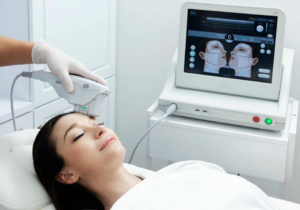
Conscious sedation the boon to dentistry
Dentistry is a demanding job as most patients anticipate fear and anxiety during their dental visits. Sometimes, it becomes extremely difficult for a dentist to perform any dental treatment on a patient who is anxious and fearful. And, control of fear and anxiety is fundamental to a dentist. With the development of general anesthetic drugs in the 19th century, dentists are now able to provide relaxing and comfortable dental procedures even to the most anxious patient.
Before the discovery of conscious sedation techniques, patients had to endure pain during their treatment. Tooth extraction among all the other dental treatments used to be a painful and uncomfortable experience. However, with the introduction of local anesthesia and conscious sedation for tooth extraction, tooth extraction is no longer considered to be a grueling dental treatment. This article will acquaint you with conscious sedation in dentistry.
What is conscious sedation in dentistry?
Conscious sedation is administered to produce a degree of sedation on a patient in order to perform a medical treatment without any hindrance without the patient getting unconscious. In the field of dentistry, conscious sedation is widely used by dentists on uncooperative and anxious dental patients. Periodontists commonly use conscious sedation for tooth extraction in children.
Conscious sedation is a technique in which a drug is administered to a patient seeking dental treatment, causing the patient’s central nervous system to slow down. Conscious sedation retains the patient’s ability to talk but the pain receptors are numbed. It can be administered through oral, intramuscular, intravenous, or inhalation.
In dentistry, tooth extraction is a strenuous procedure. It is not at all traumatic, but it does necessitate precision and experience. During dental operations, sedation dentistry makes you comfortable. It’s helpful for patients who have a dental phobia or are receiving extensive treatment.
Conscious sedation: the history
One of the main aims of conscious sedation is anxiety. Dental anxiety and phobia of dentists among many people are very high all over the world. Many times, this dental anxiety becomes a barrier to proper dental care. This general anxiety not only is a hindrance to patience but also affects a dentist too. Treating an anxious patient is also a source of stress for the dentist. Giving minimal discomfort during tooth extraction remained the greatest challenge for every dentist. With the help of conscious sedation, this aim has largely been achieved. But it took many-many years to reach this point. Let us have a look at the history of Conscious sedation.
- Modern sedation has evolved in the last 100 years. It all started when Joseph Priestly, an English chemist discovered nitrous oxide.
- Later in 1844, Horace Wells used nitrous oxide and William Morton used ether for the tooth extractions.
- Carl Koller used cocaine for local anesthesia in dentistry. After 20 years, dentists started using lignocaine and cocaine to alleviate the pain during any dental surgeries.
- Niels Bjorn Jorgensen 1945 introduced the technique of intravenous sedation in dentistry.
- By the early 1900s, there were reports of dentists using nitrous oxide as inhalation conscious sedation rather than general anesthesia. Hitherto, nitrous oxide became a popular sedation technique in dentistry.
- Later many drugs were discovered that provided anesthesia properties such as Brietal, diazepam, and flumazenil. These techniques evolved from general anesthesia practice.
Sedation dentistry in the present time
There are various types of sedation dentistry available today. The dentist will look at your medical history, length of your dental procedure, and your level of anxiety before administering any sedation. The most common types of sedation dentistry are:
- Nitrous oxide: commonly known as laughing gas, nitrous oxide is used as conscious sedation for tooth extraction to have a calming effect on the patient. The dosage of nitrous oxide is appropriated by the dentist depending on the procedure. After the treatment, the dentist will flush out the nitrous oxide from your system by giving you pure oxygen.
- Intravenous (IV) sedation: in this, a sedative is directly inserted into your bloodstream through an IV line. Patients opting for IV sedation during their dental procedure usually fall asleep and have little to no memory of their dental procedure after waking up. IV sedation works best for people who are extremely apprehensive of dental treatments.
- General anesthesia: general anesthesia is a type of unconscious sedation. In dentistry, it is mostly used in the dental treatments of babies, small kids, and people with special needs. Under the administration of general anesthesia, patients are unconscious during their dental treatment. An anesthesiologist always accompanies the dentist during the dental procedure.
- Oral conscious sedation: the most preferred type of sedation in dentistry is oral conscious sedation. In this, the dentist gives you a sedative medicine an hour before the treatment. Technically, conscious sedation is a drug-induced depressed consciousness. Some of the commonly used drugs in conscious sedation consist of opioids. These drugs’ incorrect dosages are absolutely safe to administer under supervision.
Benefits of conscious sedation
In dentistry, conscious sedation is definitely a boon for dentists as well as patients who feel anxious and distressed at the mere sight of a dentist. Here is a list of benefits that conscious sedation offers:
- It eases anxiety and helps the patients to remain calm during lengthy procedures like tooth extraction.
- It allows dentists to perform dental procedures at ease and at a faster pace because there are no interruptions and nudges from the patient.
- Conscious sedation promotes a positive attitude towards dental care and dental treatment.
- The patient regains his or her physical and mental facilities quickly after conscious sedation.
- As compared to general anesthesia, conscious sedation has very few side effects.
The use of conscious sedation for tooth extraction is an option that many people don’t know about. Sedation dentistry is the perfect solution for people who dread going to dentists for dental treatments like tooth extraction, root canal treatment, removal of caries in babies and kids, and other minor surgical dental procedures. It is a safe and effective way to get your dental problems resolved and maintain good oral health.
Anxiety and fear should never keep you from having proper dental care. Even a taxing dental procedure like tooth extraction feels like a breeze with conscious sedation. If you are considering a dental procedure that requires conscious sedation, visit www.manhattanbeachdentalcenter.com to know more about sedation dentistry. Offering the best dental care and treatments for the past 40 years in Manhattan, MB Dental is a perfect family dental clinic for all your dental problems. Find out more about conscious sedation for tooth extraction by booking an appointment with us!



